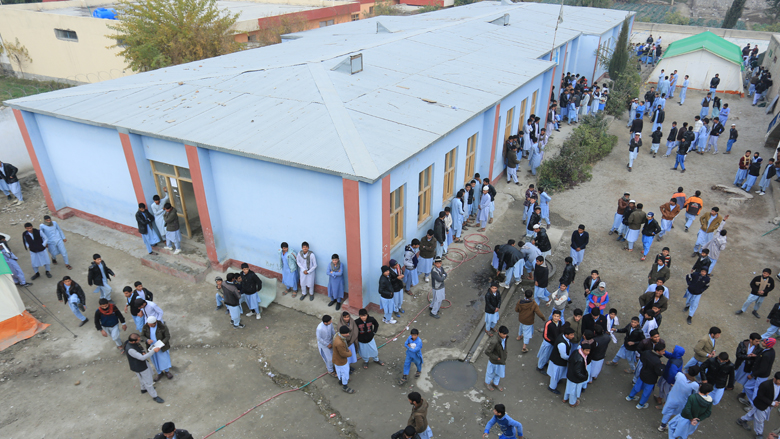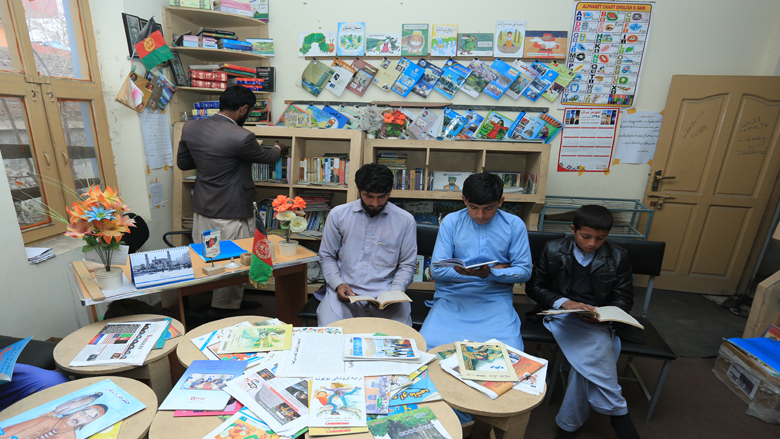BEHSOUD DISTRICT, Nangarhar Province – . He never imagined then how physically challenging school would be. In his first grade, he would walk to school with a small carpet in his bag in order to have something to sit on when he reached class.
“Studying under the shade of a tree was not comfortable,” recalls the tenth grader at Mohammadi Sahebzada High School. For seven years, he had classes in the open and struggled with the hot weather, dust, and rainy days. “They were not good times,” Rezwanullah says. “We had difficulties focusing and learning our lessons properly. The hot weather of Nangarhar was unbearable.” .
Nine years ago, Mohammadi Sahebzada High School had only three buildings. More than 10 classes, including Rezwanullah’s, were held under tents and trees because of lack of space in the buildings. These challenges were partially addressed when in 2008 Mohammadi Sahebzada High School received a 3.2 million afghani (about $64,000) Infrastructure Development Grant from the Ministry of Education’s (MoE) Educational Quality Improvement Program (EQUIP).
, providing a safe and enabling learning and teaching environment for more students and teachers.
“We have real classrooms,” says Safiullah Bahir, 24, who teaches history and civil information at the school. “In the building, students and teachers have no distractions. We can teach comfortably and answer students’ questions properly.”




